

Welcome to another segment of Reviewing Monsters! I don't particularly have anything witty or informative to say here, because we have reached a part of the Monster Manuals where a lot of it is going to be just a bunch of 'non-grouped' monsters.
I would like to note that in the 2024 Monster Manual, this part would have contained the 'Incubus' stat block, which is brand new to 5.5E. And I actually did a writeup of the Incubus... but then decided to remove it. I'll talk about it alongside the Succubus, since the Incubus and Succubus in 5E are actually two different parts of the creature's life cycle or transformation methods, and that's where I'm going to discuss the Incubus.
In the 2024 Monster Manual, any humanoid enemy in the appendix -- the 'Guards' and 'Assassins' and 'Gladiators' -- are also placed within the main body of the book. I think I've done enough monster reviews in this blog to make it clear that humanoid enemies don't really give me much to work with... but I'm still going to review those at the absolute tail-end of this 'Monster Manual review' series. I won't do it for all the adventure books, but for at least the Monster Manuals, I'm going to take time to sit down and dissect all of the 'regular animals', 'giant animals' and 'NPC enemies' at the end. If nothing else because the 2024 Monster Manual did give them quite a fair bit of nice artwork, so I have something to work with instead of just their statblocks.
Click here for the previous part
Click here for the next part
Click here for the index.
[originally published in November 2019; revised in October 2025]
____________________________________________________

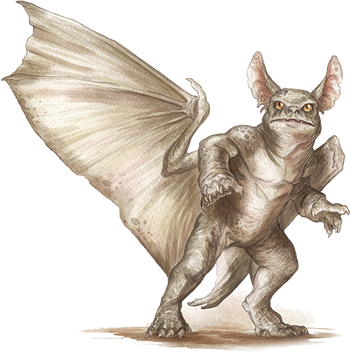
Homunculus
- 5.5E/5E: Tiny Construct; Neutral; CR 0
A feature that all editions have for spellcasters is the ability to summon a Familiar, a little sidekick that plays upon the trope of a witch’s black cat companion – or to take something more recent in popular culture, Harry Potter’s pet owl. Familiars tend to be summoned from another realm, and can take the form of a magical beast, or an actual extradimensional being like an imp or quasit.
But what if as a wizard, you want to make a real, physical companion? Well, you can just make one, and it’s called a Homunculus. Drawing from classic fiction of a ‘little man’ created by alchemy, magic-casters in D&D can do a ritual magic with clay, ash, mandrake root and blood to create a Homunculus. Homunculi are constructs that act as an extension of its creator, essentially acting as a second body with an extra pair of senses that instantly reports everything back to its owner by magic.



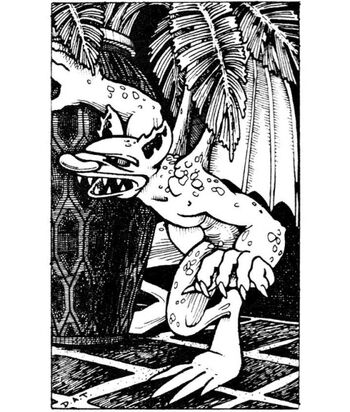
Other than acting as a strictly less practical but much more adorable way of spying or communicating, the Homunculus really doesn’t do anything much more than that. But the concept is really neat – and I think the designers in D&D have caught onto just how much this game that lets you imagine up your own characters has an audience that really, really likes customization. 1E, 2E and 4E had their Homunculus be a little bat-winged clay demon, making it effectively indistinguishable from the Imps, Quasits and Mephits and a dozen similar-looking things out there. 5E made its Homunculus a lot cuter, with a body that looks like a cat or a dog on two legs, dragon wings, and a head that could be best described as ‘Disney’s Stitch’s uglier cousin’. The end result is a cute little thing that isn’t easily described as a dragon or a imp or something.
But 5.5E? 5.5E realizes that a Homunculus could look like anything, so in addition to the guy from 5E, we’ve got a very draconic Homunculus in the foreground, a thinner black variant of the 5E version grinning in the background, and a glorious purple one that looks like an axolotl. Heck, you could even go to 3E and make your Homunculus look like a wretched, grimacing lump of flesh! Some people would do that? There is, of course, a table of different options, many of which fall under the concept of a D&D Homunculus. A robotic Homunculus made up of metal and gears? One that sprouts flowers from the clay? Patchwork like a beloved toy? Undeveloped and fleshy with beady eyes? That one kind of describes the 3E thing. Again, this really does feel like something that would be designed specifically to the individual character, and embracing that aspect has rocketed the Homunculus from being a less interesting Imp or Golem to something a lot more fun as a world-building or character-building exercise.
____________________________________________________

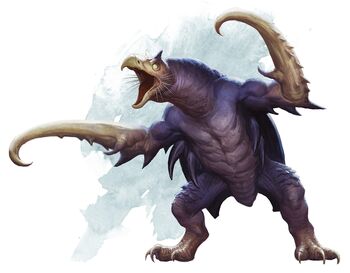
Hook Horror
- 5.5E/5E: Large Monstrosity; Neutral; CR 3
Another weird favourite of mine, the Hook Horror is another weird monstrosity that lurks in the Underdark – and a nice showcase of how weird the Underdark is. The design philosophy, particularly back in the earlier D&D days, seem to have the ‘regular’ upper world be populated by more classic mythological beasts like giants, dragons and griffons… while the Underdark is where all the weirdos they cooked up go to.
The Hook Horror is an aggressive predator that could be best described as a bird-turtle monster with giant bone-hooks for hands. There is definitely a very strong ‘dude in a suit’ tokusatsu enemy vibe to the Hook Horror, particularly with its later incarnations, and that is absolutely something that adds to the charm. In 5E, its head is a blind bird head, its humanoid body is covered with a turtle or beetle shell, it has arms extending to claws, it’s got two bird legs, and what looks like ribcages jutting out from under its arms. They are also large enough to chomp down on humanoids, as the 5.5E artwork showcases.

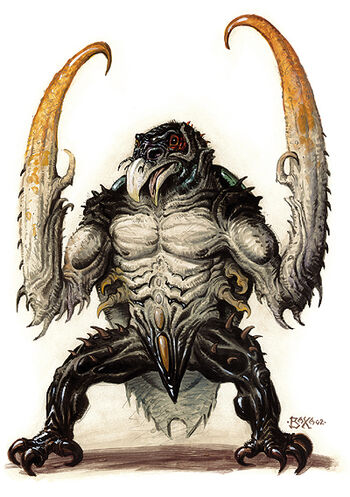

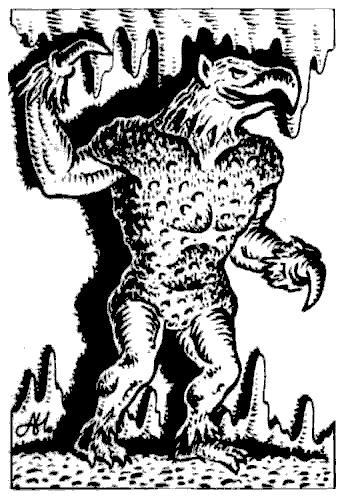
Hook Horrors live in caverns and I do like the environmental detail of how the scraping noises of their hooks echo throughout the caverns. This is due to how they actually perceive the world around them, tapping their hooks against their exoskeletons to echolocate and communicate with each other. It’s like a much more advanced version of what the velociraptors in the movie Jurassic Park do. The Hook Horrors can also scuttle around the cavern walls and ceilings with their hooks, which makes sense for a creature adapted to live in the Underdark.
They are also pack hunter, moving around in clans that are led by the largest female, and interestingly often try to attack the biggest creature they can find. Unlike most other monsters of the Underdark, Hook Horrors are omnivorous and will feed on plants and fungi if no unlucky adventurers come down their territory.
I also really like the evolution of the Hook Horror over the various editions. Their original debut in 1E is way more of a ‘dude in a suit’, with the hooks being much less prominent. 2E goes for a very, very beetle-like look – which I thought was the coolest, if not the most threatening. 3E goes all-in on making the Hook Horror be a bit more over-the-top like a comic book villain, but 4E and 5E dials that back a bit while also making the bird head look a lot creepier with blank white eyes. It’s a very neat creature all around, and I’ve gained a fair bit of appreciation for it over the years.
____________________________________________________

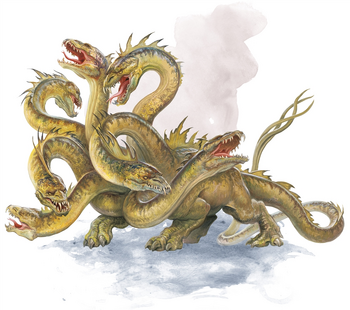
Hydra
- 5.5E/5E: Huge Monstrosity; Unaligned; CR 8
Hail hydra! Probably one of the most memorable Greek monster is the Hydra! A giant multi-headed serpent or dragon is already a very striking image in and of itself – multiple heads is a near-impossibility in real life that having an animal with additional heads is an easy way to make it more threatening. Especially if those heads are of an already threatening monster like a snake or a dragon. In fact, D&D’s most iconic villain has always been the five-headed Dragon Queen, Tiamat… and in the lore of the game, Hydras are even born from a clash between Tiamat and a rival god.
For most of the Hydra’s lifespan in D&D, it has always been portrayed in varying degrees of being a dragon or a hybrid lizard… if there is even a distinction between the two. The only exception is 4E, which went for a legless, serpentine Hydra. 5E goes for a more serpentine look, and 5.5E has a rather delightful artwork of a Hydra with much thicker, more threatening heads.
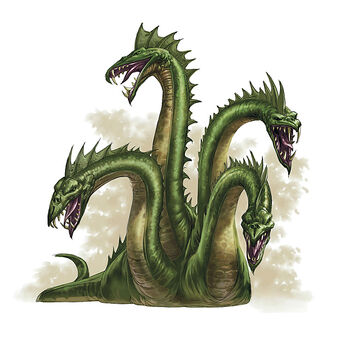


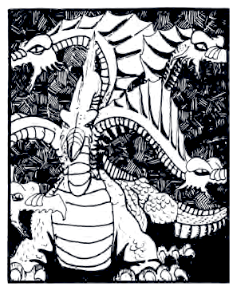
Of course, these giant beasts aren’t just a dinosaur with a couple extra heads. While a typical Hydra has five heads (because of D&D tying it in to Tiamat) each head that is severed will regrow two more heads – and as the heads regrow, the Hydra also regains hit points and the number of attacks it has increases. The only way to kill a Hydra is to slice off all its heads, and fire prevents it from regrowing these heads. It is honestly not the most complex monster in D&D, but it has a nicely clever way of showcasing its gimmick, I feel.
Hydras are also noted to be absolutely gluttonous, often hunting everything in its territory before sometimes turning upon itself and tearing its own heads apart in a frenzy of hunger. 5.5E doubles down a bit on its role in Greek mythology as a hero-slayer, noting that Hydras are often employed by deities to guard treasures, artifacts or oracles. It’s also noted by the 5.5E Monster Manual that elder Hydras have extra heads, which just easily translates into the statblock by giving it extra attacks per turn and extra health.
____________________________________________________

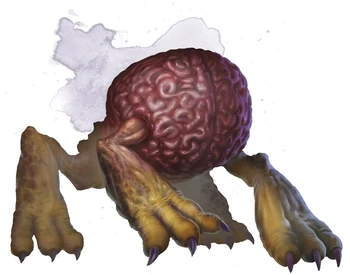
Intellect Devourer
- 5.5E/5E: Tiny Aberration; Lawful Evil; CR 2
Told you guys the Gricks aren’t the last brain monsters we’re going to see! The Intellect Devourers are basically just brains with four chunky animal feet. It’s just a simple ‘giant organ’ enemy, and it’s just a design that should be terrifying but loops back to being comedic. And I think it definitely is meant to be comedic. Intellect Devourers are essentially the creations and pets of the Illithids, or Mind Flayers… who we’ll talk about quite soon as we continue down the alphabet. But what you need to know is that the Mind Flayers’ diet involves the consumption of humanoid brains.
Intellect Devourers, of course, are made out of the brains of their victims that is put through a ‘horrible ritual’, and it becomes a loyal minion of the Mind Flayers… or more accurately, the closest thing to a ‘pet’ that these alien squid-heads can have. Intellect Devourers, as their name implies, go around trying to drain the intelligence of other creatures. It doesn’t just siphon away your IQ, though – it devours all of the mind and memories of the victim, being one of the rare cases in 5th Edition where a monster is actually able to reduce the stat of your players.
The Intellect Devourer, being a walking brain with no eyes and ears, instead has a sense that allows it to detect intelligence, zoning in on intelligent creatures to prey upon them. This ability to sense intelligence allows it to function as sentries for their Mind Flayer leaders, but also leads to a rather funny scene in the recent Dungeons & Dragons: Honor Among Thieves live-action movie where having these horrifying abominations ignore you is... actually a bit of an insult.
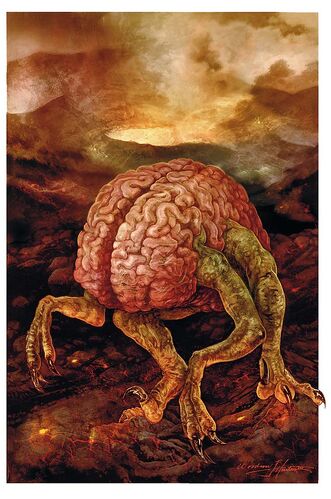



And when it comes across an incapacitated humanoid near it? The Intellect Devourer is able to magically consume the humanoid’s brain, then teleports into where the poor sap’s brain used to be in, and then hijack the body. And because they stole all of the intelligence and memories of their victim, the Intellect Devourer has enough to go on to mimic its prey! This ‘body thieving’ aspect is something that I often forget it can do, but it’s something that honestly can be played for both comedy and horror. Honestly, that’s my favourite part of this thing. The whole idea of a ‘smart-eating walking brain’ can’t be anything but silly, but the body-stealing bit, and acting it out as a horror trope of someone whose brain has been replaced with an alien monster is quite interesting!

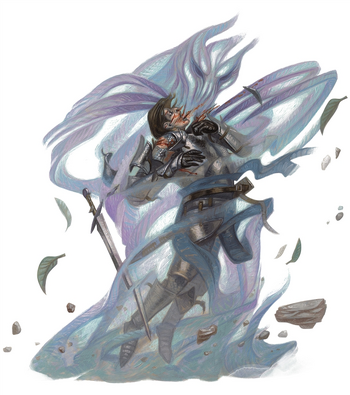
Invisible Stalker
- 5.5E/5E: Medium Elemental; Neutral; CR 6
The newer Monster Manuals aren’t as consistent with it, but the older tomes like the 2E Monstrous Manual do note the demarcation of elementals, with most ‘basic’ ones being just sentient raging elements, while more advanced ones have a bit of a more specialized function. Invisible Stalkers are one such specialized elemental, being Air Elementals that are specifically infused with a purpose to hunt. Both artworks in 5E and 5.5E show just a spectral, skull-like head made up of air, even if the 5.5E one has a more ‘desert wind’ theme to it.
Invisible Stalkers are extremely directed, with the original 5E block giving it a ‘faultless tracker’ ability that allows it to hone onto its assigned target and know the distance and direction wherever it is. 5.5E replaces this with a more reasonable (if generous) buff to checks like perception. The whole point is that these guys are invisible, so they’re just slowly, quietly tracking an enemy either to steal or to kill them. While they are good at what they do, the Invisible Stalker is bound to the magic that creates it and it’s an unwilling servant. While it can’t disobey its creator, Invisible Stalkers assigned to long-running missions will take great pleasure to re-interpret the order of its caster.
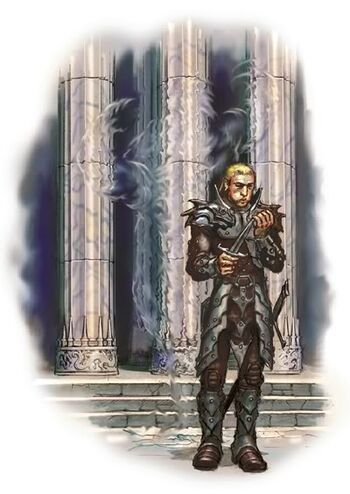

Being invisible, they can get through most locked doors, and kill with minimal evidence. In exchange, other than the fact that they’re made of air, Invisible Stalkers aren’t the most dangerous thing to fight – with a lot of their role in the story being more for suspense. With 5.5E removing their more overpowered ‘constant global awareness’ ability, they have made the Invisible Stalker a bit more powerful, giving it a larger size category and adding some extra wind spells. 5.5E also gives some additional plot hooks for ‘uncontrolled’ Invisible Stalkers, with some being Stalkers that were unable to complete their duty and trying to create circumstances to allow it to pass on; they’re the breath of a god; or manifested from uncontrolled magic.
It's never going to be my favourite monster, but I do appreciate that this thing exists. My favourite thing about this creature still and always will be its 2E art, which just depicts an empty blank space.
____________________________________________________

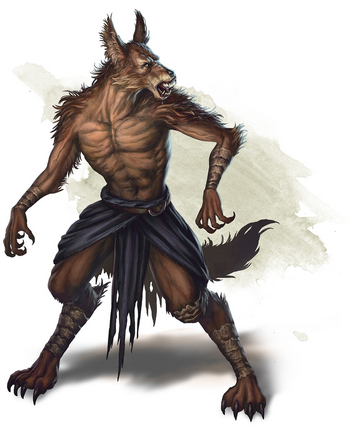
Jackalwere
- 5.5E/5E: Medium Humanoid (5E) / Small Fiend (5.5E); Chaotic Evil; CR 1/2
Huh! I think the Jackalwere ranks quite highly in the list of ‘core’ D&D monsters that I constantly forget exist. There’s just a fair amount of overlap between Jackalweres and… well, the half-dozen flavours of lycanthropes (or were-beasts) in the Monster Manual, and unlike the Werewolf and its many different animal cousins, the Jackalwere doesn’t exactly have an iconic monster fiction to fall back on.
Jackalweres are basically jackals that were tainted by demonic power… and that’s kind of the main gimmick that they have. Werewolves and Werebears are humans (or humanoids) that were cursed by the demon lord Graz’zt to transform into animals. Jackalweres are, in their natural forms, jackals. It’s… it’s not that interesting, and visually they’re just humanoid jackal-people. Which, again, loses its uniqueness in a setting with Gnolls and Werewolves and Tabaxi and a whole menagerie of other animal-people.
Jackalweres are able to transform between three forms, and fans of One Piece will recognize this as being quite similar to a Zoan Devil Fruit user. Its natural form it’s just a regular jackal. It can also transform into a completely human form, which is slightly more gaunt than a regular human but otherwise indistinguishable. But the form that the 5E artworks depict it primarily as is the hybrid form, which looks like a furry man with a jackal’s head and claws.

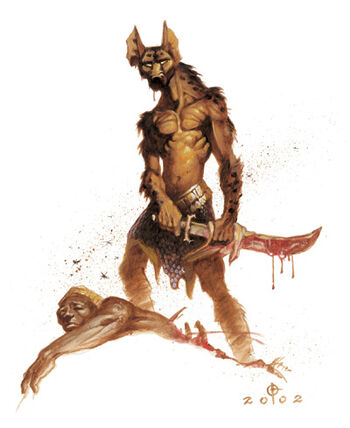

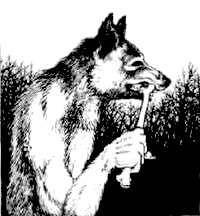
Beyond regular ‘beast-man’ attacks, Jackalweres have a ‘sleep gaze’ that allows it to hypnotize and knock out humanoids that make eye contact with it. Slightly more interesting is the fact that Jackalweres were created by Graz’zt as beings of lie and deception, so that’s the one part that they can’t change – they will wince whenever they tell the truth in their disguise. Which… again, not the most exciting or memorable monster quirk. They are also apparently servants of Lamias, and their whole deal of being able to shapeshift and infiltrate society is for them to kidnap human victims for their Lamia masters.
5.5E drops all this association with Lamias, which I don’t think many people remember, and just reduce them to just desert tricksters that play tricks and torment those who pass through their territory without giving treasure. They do so by tricks, like leaving maps that lead travelers to a monster’s lair or a deserted location… which is very underwhelming/ Neither interpretation honestly calls out to the imagination for an interesting adventure hook, and I really do feel like there could have been a lot more to them.
____________________________________________________


Kenku
- 5.5E/5E: Medium Humanoid (5E) / Monstrosity (5.5E); Chaotic Neutral; CR 1/4
I love the Kenku! The Kenku would become a playable race in one of the later 5E books, and unlike the poor Jackalwere, there is a lot even in the Kenku’s original 5E debut to talk about that really inspires stories with them. Their stat block isn’t the most impressive, they just have regular humanoid abilities. Some additional ambush tricks, but their signature ability is ‘Mimicry’. See, Kenkus can perfectly mimic any sound they have heard, including voices, like a far more advanced parrot. Kenku aren’t parrot-people, though, they’re crow-people. 1E and 2E had them be a frankly unremarkable eagle-men race (they're essentially the modern Aarakocra), but I'm happy that from 3E on they've had a very nice niche as cursed crow-people.
And this ‘mimic’ thing is going to be the basis of a lot of themes about the Kenku. But let’s talk about what the Kenku is! They’re bird-people, but they’re not like the Aarakocra. The Aarakocra has an angelic body shape, with powerfully-built humanoid torsos and wings sprouting from their backs. Kenkus are mostly humanoid, save for the bird head and taloned legs.
And they are a whole race that have been defined by their lack of flight, in fact – despite their bird features, they are not able to do the thing that birds are most known to do. Once, they were able to fly in the past, serving a ‘master whose identity is now lost to memory’. They were driven by greed to steal the shiny baubles in their unnamed master’s possession, leading them to be cursed with the lack of ability to fly… or to speak.
It’s a bit of a karmic curse where the Kenku used to be able to use their voices to charm and cajole, but now they are cursed to only be able to communicate using whatever they have heard before. It is similar to Bumblebee from the Transformers movies, who communicates by soundbytes taken from songs and TV. It’s such an interesting, weird gimmick for the species, and I love the Kenku for it. This allows them to make voices like the sound of a barking dog, the clinking of coins, and perfectly reproduce conversations they have overheard… and these can also form codes for their little communities. Like, a very specific cat’s meow might mean ‘the town guards are here’. In addition to mimicking voices, Kenku are also adept at mimicking handwriting and symbols, allowing them to be able to forge documents, which is a nice thematic ability tied to their mimicry deal.

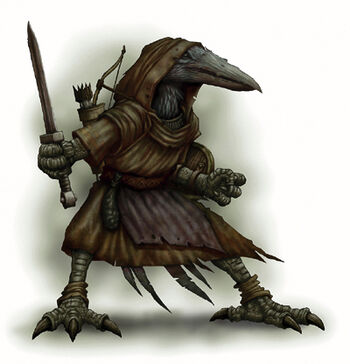

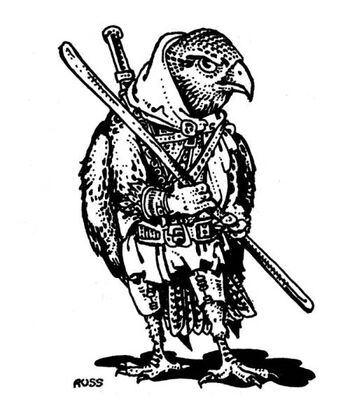
Of course, as a playable species, it is a bit daunting for every conversation done by a Kenku to require a player to be able to improvise so well without a script… and it might get annoying. But a good enough DM and player can make it work quite well. If nothing else, the player Kenku might be an exception where they have heard a lot of voices and words in their life; whereas NPC Kenkus might do the ‘repeat voices’ gimmick.
In addition to the voice mimicry thing, Kenku sneak around with rags and clothing, hiding themselves and stealthily moving in the shadows, essentially a whole race whose description and abilities make them suitable for thievery and spying. Again, with the whole deal of them being able to mimic voices and whatnot, it really does feel like the Kenku race was built to be the stereotypical ‘people living in the thieves’ lane’ NPC. Kenkus are noted to live in massive flocks and they often take over entire abandoned district with their allies, and I love the artwork in the 5.5E piece showing lots of glowing raven eyes within the buildings.
But they are not just thieves and copycats. Because at the end of the day, the Kenku people as a whole pine for the ability to fly. This would, I imagine, make any Kenku spellcasters with spells that grant flight to be highly valued among their people. 5.5E even notes that many Kenku often go around trying to find of artificial ways to fly, or to end the curse on them. The 5E Monster Manual also notes that this obsession with flight also leads to how Kenku mete out punishment – heavy wings of wood as a mark of shame; and execution done by tossing the condemned off of a cliff. Again, there's a lot to work with the Kenku, and I love them.
____________________________________________________

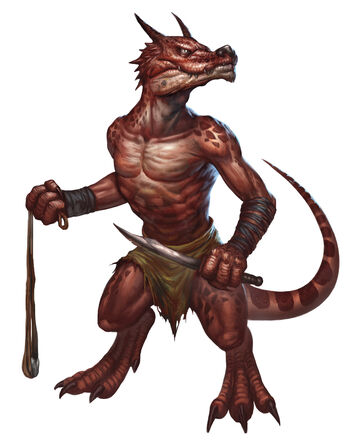
- 5.5E/5E: Small Humanoid (5E) / Dragon (5.5E); Lawful Evil (5E) / Neutral (5.5E); CR 1/8
Kobolds are the other common race of ‘monstrous humanoids’ that often act as early-game monsters to a party when you’re not using goblins. And I don’t think I have a properly fixed mental image of what kobolds are in my mind, mostly due to every fantasy setting out there having their own interpretation of what Kobolds are. While starting off as a generic furry beast-men in D&D’s lore, Kobolds have quickly been reinterpreted in 2E as tiny, humanoid vermin-men. I assume these is where a lot of D&D-adjacent interpretations of Kobolds as rat-people comes from. But from 3E on, they're just tiny humanoid dragons, and solidified their role and niche in D&D. And that niche is essentially defined by weakness – a Kobold in 5E doesn’t have much in terms of distinguishing features… in fact, what they have on their stat block is ‘sunlight sensitivity’, making them weaker outside of the dark caverns they prefer.
5E in particular would characterize them specifically as tiny dragon servants, and in perhaps one of the more sensible creature classification changes, Kobolds in 5.5E are straight up counted as ‘Dragons’ instead of ‘Humanoids’. Which I feel does make sense with how much of their 5E lore associates them so much with dragons – particularly in material such as Fizban’s Treasury of Dragons and Volo’s Guide to Monsters.



Kobolds are small humanoids with the heads, tails and claws of dragons… but not much else. They scamper around in caves and tunnels, relying mostly on traps – specifically comedic traps – to try and gain an advantage against more powerful larger humanoids. They worship dragons as demigods, and even when they are not associated with a dragon, they will infest dungeons, reproduce explosively, and gather any treasure they can for their own ‘hoards’. It’s something that appears to be partially religious and partially instinctual, where they attempt to mimic what the greater dragons do. From a writer’s standpoint, they do serve nicely as a very convenient and recognizable set of minions for the dragons… which is, I suppose, an important niche in a world where said dragons form one-half of the title.
The Kobolds are also known for their explosive breeding capabilities, laying many eggs in massive clutches to make up for their individual weakness. It is interesting to note, though, that due to their draconic blood a Kobold has a theoretical maximum lifespan of centuries… not that most Kobolds ever live to be that long. Most Kobolds get killed due to environmental hazards, adventurers, or other monsters that inhabit the same caverns and dungeons that they do.

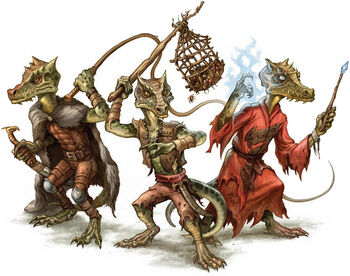

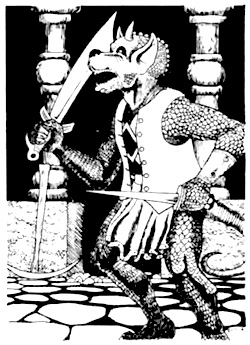
In addition to their explosive reproductive capabilities, Kobolds also make up for their lack of strength with making their lairs and tunnels in locations that are much too small for medium-sized humanoids. They also riddle these lairs with traps, which 5E art tends to depict as hilarious rube-goldberg machines, with tripwires being attached to elaborate traps that launch centipedes or green slimes at their foes. Volo’s also describes giant clans of Kobolds that make their warrens underneath large cities, which gives you an interesting ‘city sewer’ mission plot hook.
Overall, I have grown to appreciate these little guys a lot… particularly after reading up on them from Volo’s Guide to Monsters. While that book mostly focuses on Kobold society and how they serve dragons, it does raise an interesting amount of questions. What happens to the Kobolds that decide to subvert this? What happens to Kobolds that serve Metallic Dragons, or Gem Dragons? Giving them enough of a non-specific backstory while not tying them to specific characters too much does make the kobolds a surprisingly versatile race to use as antagonists and NPCs… and, of course, a nice avenue for comedy.
____________________________________________________
Winged Kobold / Urd
- 5.5E/5E: Small Humanoid (5E) / Dragon (5.5E); Lawful Evil (5E) / Neutral (5.5E); CR 1/4
A prominent variant among the Kobolds are Winged Kobolds, or ‘Urds’ – which, by the way, is a rather unwieldy name that isn’t really anywhere as catchy as ‘Kobold’ is. Urds are thought to be blessed by powerful dragons or even Tiamat herself. Of course, Urds are still Kobolds so for the most part they tend to use their wings to escape or to do cowardly tricks like dropping rocks on adventurers. They didn't really get any artwork throughout 5E until the 5.5E Monster Manual.
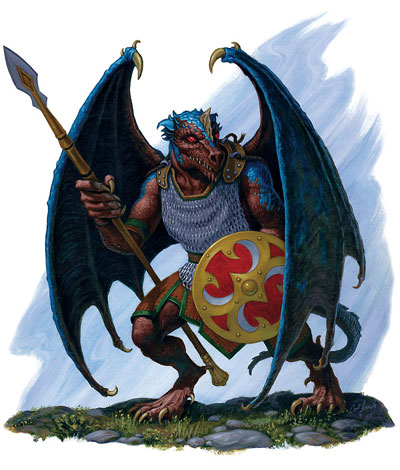

It's a nice little ‘elite’ monster variation, and one that even makes sense with the lore since having wings is something that makes a Kobold closer to becoming their draconic ideal. The original 5E simply has the ‘dropped rock’ as an attack, but 5.5E plays up the Kobolds’ connection to Chromatic Dragons, and buffs the Urd’s attack as a charmingly-named ‘Chromatic Spittle’. This allows the Winged Kobold to unleash a weak, baby version of its respective dragon’s breath attack. It’s a nice way to make the Kobolds a bit more threatening, a bit more thematic, and I like that the art even showcases a blue-scaled Winged Kobold – most 5E art have only shown red-scaled Kobolds exclusively, and this helps to really reinforce the idea that these guys are related to Chromatic Dragons.
Lastly, I also love the little description that despite technically being blessed and more powerful, other Kobolds are more likely to be jealous of Winged Kobolds, and might even sabotage them because of this jealousy.
____________________________________________________

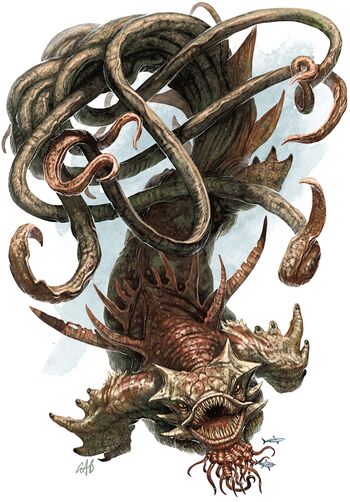

Kraken
- 5.5E/5E: Gargantuan Monstrosity (Titan); Chaotic Evil; CR 23
“Unleash the Kraken!” Got to love these giant underwater monsters, yes? The idea of a Kraken as a gigantic squid or octopus, so large that they can wrap around the masts of a sailing ship with their tentacles, has been solidified in the minds of popular media, and I’m not surprised to see that D&D has chosen the Kraken to be the ultimate end-game enemy for an aquatic campaign. Standing at a whopping CR of 23, a Kraken is a mighty being whose abilities allow it to unleash powerful physical attacks, toxic ink blasts, control the storms, and swallow its prey. And the Kraken does have a reputation among much of the 5E community for being somewhat disappointing for a creature that’s supposed to menace higher-levelled adventuring parties. But this is where my analysis on the statblock will stop, since I find the Kraken to be so much fun from a flavour standpoint.
And it is quite interesting the direction they took the Kraken in for 5th Edition. Krakens in previous editions have always just been a really big squid. And that’s about it. But 5E took some inspiration from the ‘Clash of the Titans’ movie by characterizing the Krakens as forgotten ancient weapons created by the gods, and banished away underneath the oceans. Some await the gods to call them again, while some plan and scheme to fight the gods that have abandoned them. Also taking a fair bit of inspiration from the Cthulhu mythos, the Krakens also get this really badass description: “Beneath the waves, the Kraken sleeps for untold ages, awaiting some fell sign or calling. Landborn mortals who sail the open sea forget the reasons their ancestors dreaded the ocean, even as the races of the deep ignore strange gaps in their histories.”
This characterization of the Krakens as ancient beings that are sealed and awaiting their chance to awake is really cool to me, and the Krakens are noted by no uncertain means to be intelligent and cunning… which makes it a lot more exciting than just a big boat-crushing squid. The Krakens have also found themselves in many class descriptions as potential patrons for warlocks or the like, essentially taking a Cthulhu-Elder-God role. Cults spring up around the Krakens, and later adventure modules like Ghosts of Saltmarsh would even involve them as the ultimate endgame enemies.
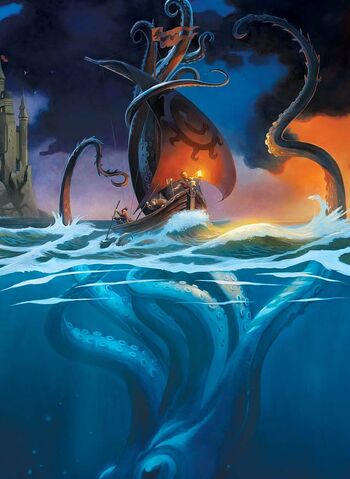



I really like the descriptions of the Kraken’s lairing habitats as well, with the Monster Manual noting that while Krakens prefer to lair in underwater caverns, they are very much amphibious! A sufficiently motivated Kraken can very easily climb onto a coastal town, kill everyone there and choose to live there while its tentacles coil and crush the buildings around it. Like many powerful monsters, a Kraken’s presence causes regional effect – the creation of storms as the Kraken wills, the spontaneous creation of Water Elementals, and causing all aquatic creatures to be charmed and obey the Kraken’s call.
There has been three different depictions of Krakens over 5E’s history – the 5E Monster Manual, the Ghosts of Saltmarsh module, and the 5.5E Monster Manual. It really does show the 5E design team’s rather interesting view of the Kraken and how ‘recognizable to pop culture’ they wanted to make it. The original 5E Kraken breaks from the mould of just being a giant squid, and it’s one of the most interesting monster redesigns in 5E. For the most part, 5E tends to draw upon previous editions when adapting their monsters with the exception of the Kraken – it has tentacles, yes, but the tentacles trail behind a body that could be best described as a giant monster mermaid. The ‘fish tail’ is made up of giant squid-like tentacles, but the front half of the body looks vaguely humanoid, with disturbing human-like fingers warped into a fin-like shape, many fish-like fins, a fanged, dinosaurian head and a beard of thinner tentacles. The design ends up looking like some kind of primordial kaiju, I suppose, some kind of deep-sea leviathan that gets described as a ‘giant squid’ by the sailors who only saw part of the body. And I thought that was really cool, even if I’m not 100% in love with the design. Perhaps if this design concept was released as a ‘Leviathan’ or ‘Elder Deep One’, it might have been received a lot better.
But attaching the Kraken name to it does come with some expectations, and that expectation is… a big cephalopod. Ghosts of Saltmarsh, an ocean-themed adventure, ends up releasing a giant squid as a ‘Juvenile Kraken’, which I thought was cute – it seems to imply that these Krakens start off as being giant squids, before morphing to the more abstract underwater behemoths that the original 5E art showcases. 5.5E decided to go all-in on being more recognizable, printing their adult Kraken as just a straight-up giant squid rising out of the ocean, albeit with far more intelligent eyes and a main body that’s armoured with some rocky carapace. Overall, I am honestly not sure which I prefer, but I do appreciate both takes on the Kraken.
____________________________________________________


Kuo-toa
- 5.5E/5E: Medium Humanoid (5E) / Aberration (5.5E); Neutral Evil; CR 1/4 (Kuo-Toa), 1 (Whip), 3 (Monitor), 6 (Archpriest)
Ah, the Kuo-toa! They are one of my favourite creatures from D&D, in no small part because they are inspired by the Deep Ones from Lovecraft’s iconic ‘The Shadow Over Innsmouth’, and are likely the inspirations for Warcraft’s own iconic Murloc enemies. The Kuo-toa are purple-skinned fish-people, who are distinguished from the many other fish-people in D&D for one simple reason… they are crazy. Very, very crazy! They were driven deep underground from their original homes, and deep underground are powerful forces like the Mind Flayers and Aboleths, who corrupted the Kuo-toa and broke their mind.
By the time these tormentors abandoned them, the Kuo-toa has been shattered beyond repair and now they live in utter madness. Their minds are shattered beyond repair, and they begin to invent gods to protect them against threats – gods based on whatever sea creature parts they can scavenge. 5.5E even gives us a fun set of tables for mix-and-match Kuo-toa gods, that might have the head of a sea anemone and the body of a hermit crab; or the head of a treasure chest and the body of a sea cucumber. Interestingly, 5.5E also notes that the Kuo-toa history is so poorly kept thanks to their madness that they might be raging over a completely imagined history or origin story, and their oppressors might range from Illithid to Human to Elf among different tribes. All that’s common is that they’re angry at someone.
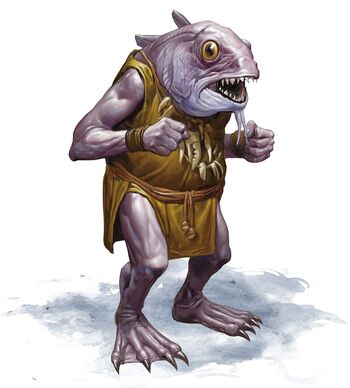


But there is something utterly unique about the Kuo-toa. Whatever madness has gripped them, there is some quality about the species that causes their religious fervour that their collective subconsciousness can cause their god to manifest as a physical entity. They literally imagine their nonsense god into existence, the most famous across D&D lore being the Sea Mother Blibdoolpoolp – a female human with a crayfish’s head and claws; likely originally crafted from a discarded statue. Blibdoolpoolp is now part of the Forgotten Realms pantheon, all because the Kuo-toa literally imagined her into existence. And Blibdoolpoolp and the other Kuo-toa gods can, in turn, grant priestly powers to the Kuo-toa Archpriests. It’s like a divine perpetual motion machine, all because crazy fish-people believed that hard in salvaged statues they cobbled together. It is interesting, however, that all the different Archpriests leading their separate clans just cannot agree on what gods they should worship (other than Blibdoolpoolp) and while they have the potential of conjuring gods, this lack of organized religion prevents them from being a bigger cosmological threat.
5E gives us several different variants of the Kuo-toa, going from the weakest to the strongest being the regular Kuo-toa, the Monitors, the Whips and the Archpriests. The Archpriest leads the tribe, and the Whips tend to be the Archpriest’s children that are granted spellcasting powers by their chosen gods. The Monitors, meanwhile, beat the rest of the Kuo-toa in line, enforcing the obedience of the clan. Due to their desire to sacrifice their captives to their imagined gods or masters, Kuo-toa also tend to have equipment suited to capture prey – nets or the ‘man-catcher’ pincer staff held by the Whips. They also use their naturally-occurring slime to trap their victims.

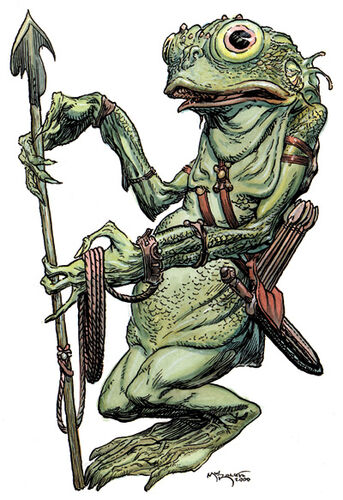

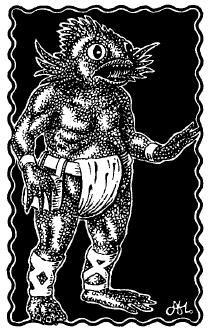
I do like the evolution of the Kuo-toa over the years. Being green fish-men in 3E and 4E, with a particularly froggy look in 3E, the reinvention for 5E gives them a more unnatural shade of purple, and made them very googly-eyed. Those dead-fish eyes really do give them a nice vibe of madness. Their outfits were a bit generic in the original 5E, but 5.5E takes an interesting direction in making them both more serious but also simultaneously more whimsical. 5.5E swaps the googly eyes with dead-fish eyes, which looks a lot more threatening… but also makes their accessories a lot cuter. It’s a lot more obvious – particularly with the stronger Kuo-toa – that they are salvaging random underwater life for their equipment. The Monitor uses a whip made out of some large fish’s spine, and the Whip’s “Mancatcher” pincer staff is changed from a metal contraption to a giant lobster claw on a stick. The Archpriest has a scarier face, but he’s also riding on a giant hermit crab that’s made its home in a Colossus’s helmet.
Again, lots of fun things to have with the Kuo-toa. The Kuo-toa themselves already offer a fun template for a wacky (or creepy) cultist society of mad fish-men, but it’s also noted that the Kuo-toa are just as likely to serve an Aboleth or a Kraken out of a belief that they are the reincarnations of their gods. Between the plot threads that you can pull from the Kuo-toa hierarchy as presented in the Monster Manuals, and the fact that they could be mad servitors of a different monster, makes these wacky fish-people very flexible in a campaign.
Again, the sheer insanity of all of this is something that delights me – the fact that they are creepy fish-people (or weird frog-people in 3E) is enough to make me like them, but there are a lot of different fish-people in D&D. I can think of at least six others in 5E alone! But the Kuo-toa’s unique brand of insanity does really makes them way more fun.
____________________________________________________

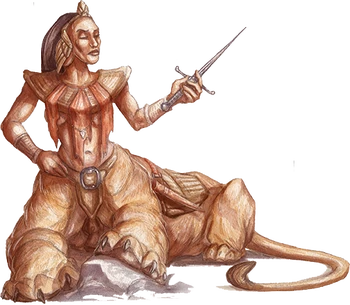
Lamia
- 5.5E/5E: Large Monstrosity (5E) / Fiend (5.5E); Chaotic Evil; CR 4
Where the Kraken has been changed to be more similar to its most common pop culture depiction, it is quite interesting that the Lamia hasn’t actually been turned into a half-snake woman, but has remained more or less consistent across most editions as this vaguely-Mesopotamia-or-Egyptian-inspired lion-centaurs. I would like to point out that 3E did have a ’Lamia Noble’ variant that has the snake lower body associated with most modern depictions of the Greek myth; while 4E’s Lamia is a sexy fey lady made of bugs because… reasons? For the rest of D&D’s history, they have been women with the lower body of lionesses. 5.5E again subtly adds a male Lamia in the background of its art – which actually has been around as a subtle variant in older editions.
5E’s Lamias are noted to be associated with the demon lord of hedonism, Graz’zt, who transforms his mortal servants into Lamias and granting them great powers and immortality. Monstrosities in 5E, it makes sense that 5.5E changes them to being proper Fiends due to this link. Lamias are noted to lair in tombs of forgotten monarchs and make it dens of hedonism and debauchery. They send their Jackalwere minions to raid nearby caravans and villages for slaves and treasures.


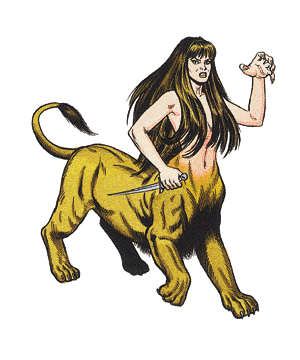
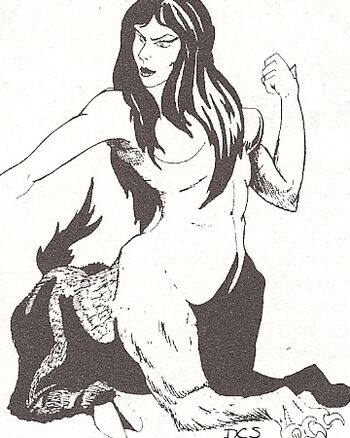
Older editions note that Lamia would abduct humanoids specifically to mate with, but 5E instead has the Lamia gather slaves and use their mind-controlling abilities to pit them against each other in combat, or delighting in seducing and corrupting the most powerful and beautiful just to see their pure hearts and ideals crumble. But if all else fails? The Lamia will be just as happy to eat the captured humanoids.
Lamias in combat are reasonably powerful, having the lower half of a lion, but their most powerful abilities are their corrupting touch that lowers the Wisdom of their prey. A lowered Wisdom causes the prey to be more susceptible to the Lamia’s illusory spells… but most importantly is the Lamia’s access to the Geas spell, possibly the most powerful mind-control spell in 5th Edition. The Lamia does fit as a rather early-game dungeon boss, or even a morally questionable quest-giver… which is probably why the 5.5E Monster Manual gives a list of potential quest avenues that a Lamia might be convinced to spare an adventurer for.
I would like to note that the Lamia really doesn’t have anything to do with her mythological inspiration, who is an ancient queen from Greek mythos that was cursed by Hera to kill her own children, and due to this horrific act was transformed into a monster. Throughout various legends, the term Lamia would then mutate into a kind of succubus/empusae-esque monster that seduced men to eat them, and in the 1800’s we get the snake-woman interpretation. I ultimately do feel like there could’ve been a bit more about the Lamia in 5th Edition, because they feel like they could have a lot more to them but just never really had any attention given to them.
____________________________________________________

Larva
- 5.5E: Medium Fiend (Larva) / Large Swarm of Medium Fiends (Swarm); Neutral Evil; CR 0 (Larva), 1 (Swarm)
Oh hey, here’s something that’s mostly new! The Larva, or the Soul Larva, was part of the original 1st Edition Monster Manual – but they have been kind of forgotten in a lot of the newer material that focuses a lot more on monsters as exclusively a vehicle for stats to combat. They did actually appear in 5th Edition’s original Dungeon Master’s Guide, but only as part of a sidebar and I didn’t even realize they were there! 5.5E gave the Larva a whole page for their own.
Originally depicted as essentially worms with human faces, 5.5E’s gruesome art shows off the Larvae as being huge, engorged flesh-coloured grubs with the faces of tormented souls. We get a nice selection of human, elf and tiefling faces in the foreground. Larvae are basically what happens when souls are condemned to the hells of the Lower Planes… showing that there are ways you can go beyond being a Manes or a Lemure. The Larva isn’t really a creature that’s built for combat, being weaker than even something like the housecat or owl stat blocks included in the same Monster Manual… but again, not all monsters are there to be fought. Some are there just to make the world more robust.


The Larvae are described to be basically helpless and try their best to avoid the attention of the demons, devils, yugoloths and other beings that patrol the Lower Planes. They are viewed by fiends as delicacies, or as fuel for their evil rituals. Night Hags are noted to herd Larvae and use them as a twisted form of currencies. Larvae that survive on the Lower Planes long enough might evolve into other lesser fiends, but the chances of that happening is quite low – and more likely than not, they will transform into some wretched existence like a Manes or Lemure anyway, which isn’t much better for their survival rate. The thing is, there are some interesting stories to be told with them. Are you given a quest to look for a specific soul condemned to the hells and transformed into one Larva among thousands, among millions? How will you respond when a Night Hag quest-giver pays for your services with screaming, tortured Larvae? These Larvae are beings that were condemned to the Lower Planes in the first place, so it’s likely that they weren’t nice people in the first place. Do they deserve their fate, or do you take pity on them? Poor little grubs!

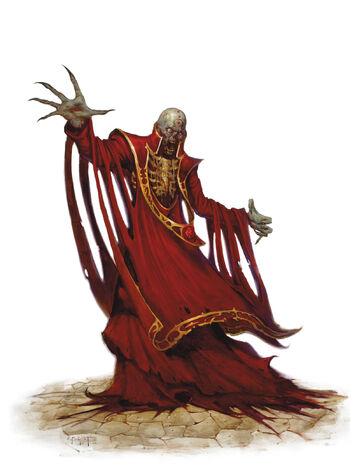
Lich
- 5.5E/5E: Medium Undead - Wizard; Neutral Evil; CR 21
And we’re finally hitting one of the creatures that D&D made super-famous as a word synonymous with ‘evil undead sorcerer’… the Lich. Sure, I’m sure if you plumb the many D&D tomes, you’ll find other examples of super-powerful undead, but the Lich tends to remain the undisputed skeletal champions of being the most iconic powerful undead. Having been the origin of many of D&D’s most enduring and iconic villains – notably one of D&D’s most enduring villains Vecna; but also Szass Tam of Thay, and the Gith’s Lich Queen Vlaakith – Liches are the result of the most powerful wizards doing a ritual to turn them into one of the most powerful beings in existence… an immortal undead that can regenerate even after their physical form is destroyed.
Because yes, a Lich is in and of itself an already powerful being – it’s a powerful spellcaster with spells up to the ninth level, and a creative DM can just slap even more spells on the Lich – but it is also monstrously strong. Lots of resistances, the ability to paralyze enemies on touch, the ability to teleport, frighten with a gaze, raise undead spirits, counterspell… and that’s without adding more spells. Because realistically, any spell that a wizard or sorcerer can learn in your world, a Lich can learn, too.
But most powerful in a Lich’s arsenal is its ability to regenerate from a Phylactery (renamed as the less-cool ‘Spirit Jar’ in 5.5E due to the fact that Phylactery draws from a term from Judaism). A Phylactery can be any small trinket or jewel that was meaningful to the Lich. Essentially, a Lich’s soul is bound to that Phylactery… which doesn’t even have to be in the same dungeon as the Lich is. So in the off-chance that the powerful spells the Lich has isn’t enough to save it, it can just let itself be destroyed, and it will reform completely from the Phylactery. This is terrifying, but also a double-edged sword – the Phylactery can very well be targeted by aspiring adventurers, and once it is destroyed the Lich itself will be vulnerable to permanent demise the next time it’s destroyed.
The Phylactery itself is also not the easiest to destroy. It tends to be powerfully enchanted, and sometimes you might even need a specific way to destroy it. While the list of potential baubles in 5.5E's little table only revolves around trinkets, there's also no rule that really specifies how a Lich is going to take steps to ensure that their one weakness is protected. Does the Lich keep it by its side at all times? Hidden as a single coin in their hoard? Shunted to another dimension? Illusion magic? Is it not even a trinket, but polymorphed into a living creature? It is very easy to have the quest to destroy these Phylacteries be the major quest instead of 'merely' fighting the undying spellcaster. In fact, seminal fantasy works Lord of the Rings and the last books of Harry Potter essentially revolves around their respective heroes finding ways to destroy items equivalent to the Lich's Phylactery.
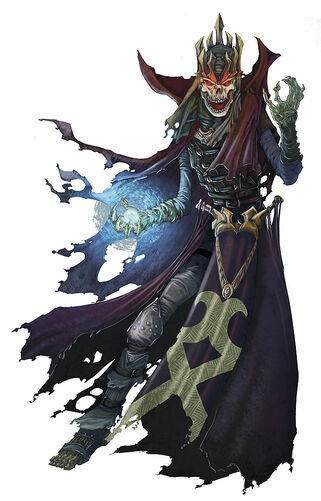


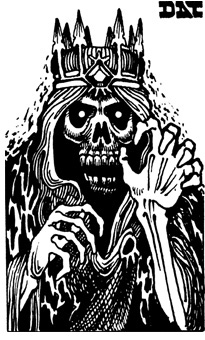
In 5E, maintaining the Phylactery itself is an interesting concept. The Lich must periodically feed souls to its Phylactery to maintain the magic that preserves its body. It probably isn’t too hard since most Liches tend to live in dungeons or towers, and with so many sentient beings in the D&D world that can be fooled to working or worshipping a powerful being, a Lich could easily trick a horde of goblins or kobolds to essentially give it a constant stream of sacrifice. But it is also kind of cute that a Lich that spends too much time engrossed in studying the secrets of the world’s magic could just… forget to maintain its Phylactery and degenerate into a Demilich. Silly Lich!
One problem that I do have with the Lich – and a lot of D&D’s undead in general – is that it doesn’t really have a really iconic ‘look’ to it. It’s just a skeleton or a near-skeletal zombie in very inconsistent robes. Which is fair enough, the Lich can change clothes, but it does raise an interesting idea that a Lich could disguise himself amongst a horde of weaker skeletons and zombies.
While the Vecna-esque Lich at the end of the dungeon is certainly a very cool trope, there’s also the description of the journey to becoming a Lich. The path to Lichdom involves a lot of secrets in plumbing forbidden magical lore, and most likely some profane ritual that involves sacrifices. There’s also the story hook of having a wizard or a cultist who your party encounters multiple times, and each time he gets closer and closer to his goal of turning into a Lich. Or perhaps it's a temptation gnawing at the back of one of your PC's minds. One of the main fantasies involved is the idea of a corrupting force that drives someone to transform themselves into something quite profane – so profane that even other monsters like Dragons and Mind Flayers would go out of the way and destroy Liches of their own kind. The ritual to become a Lich is often vague, but 5E tends to note that it involves the sacrifice of souls to be used as fuel in the ritual.
The idea of a Lich is also something that could easily be customized and mixed-and-matched with other monsters. We’ve already seen the Dracolich previously in our coverage of the Monster Manual; but in 5E alone we have had Illithiliches (Mind Flayer Lich), Fungal Liches and Eldritch Liches. Essentially any sufficiently intelligent creature can theoretically do the Lich ritual and add their unique aspects to that of a Lich. But yeah, that’s a pretty cool monster to end on, and while the idea of a Lich might seem a bit simple, there’s a lot of twists you could realistically do with it.
A bunch of fun monsters in this bunch, always reminded how the Mind Flayers hold the intelect devoured like pudgy dogs
ReplyDeleteKobolds are also funny lads. The three in a trench coat will always be a classic to me.
I always found that to be a bit endearing about the Mind Flayers. On one hand, sure, I get that people don't want *every* monster to be 'cute' and 'redeemable', but Mind Flayers are only nice to their little brain pets. Nothing else. I think they can still be extremely xenophobic to all other humanoids and still be nice to their pets, that also have a horrifying feeding mechanism as they do!
DeleteKobolds are fun. Admittedly I always felt a bit weirded out by them since in all other fantasy media they are either rat-people (Warcraft, mostly) or nondescript beast-men (usually JRPGs). So to have them be neither of those, but be essentially weaker lizard-folk baffled me. But especially with the 5E lore? They are super fun!